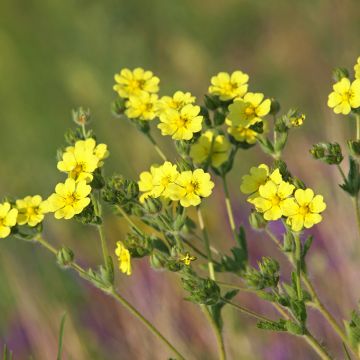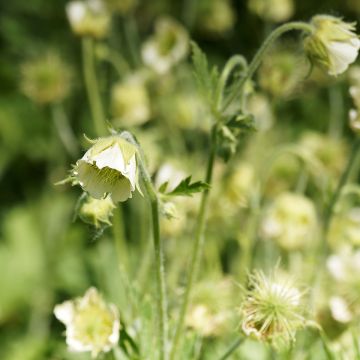

A collection of three Potentilla
A collection of three Potentilla
Potentilla nepalensis, atrosanguinea, megalantha
Very pretty collection. They seem to be thriving in my garden and have already grown quite a bit. I'm delighted and can't wait to see the flowers :)
DorienneB, 28/04/2025
Special offer!
Receive a €20 voucher for any order over €90 (excluding delivery costs, credit notes, and plastic-free options)!
1- Add your favorite plants to your cart.
2- Once you have reached €90, confirm your order (you can even choose the delivery date!).
3- As soon as your order is shipped, you will receive an email containing your voucher code, valid for 3 months (90 days).
Your voucher is unique and can only be used once, for any order with a minimum value of €20, excluding delivery costs.
Can be combined with other current offers, non-divisible and non-refundable.
Home or relay delivery (depending on size and destination)
Schedule delivery date,
and select date in basket
This plant carries a 12 months recovery warranty
More information
We guarantee the quality of our plants for a full growing cycle, and will replace at our expense any plant that fails to recover under normal climatic and planting conditions.

Would this plant suit my garden?
Set up your Plantfit profile →
Description
This collection of perennial potentillas offers long-lasting flowering while requiring little maintenance. Potentilla nepalensis 'Miss Willmot', P. atrosanguinea, and P. megalantha provide a range of flower colours, from pale pink to deep red and vibrant yellow. The height of the plants varies from 20 to 60 cm, with foliage that is typically deciduous and resembles that of strawberries. Flowering begins in June and extends until early October, depending on the plants. These perennials can withstand frost down to -15°C and adapt to various climates. They can be planted in borders, beds, or containers, and are also well-suited for rock gardens.
The collection consists of:
1 x Potentilla nepalensis 'Miss Willmot': this variety displays pink flowers with darker shades in the centre. It reaches a height of 45-50 cm and has deciduous, bright green foliage.
1 x Potentilla atrosanguinea: distinguished by its dark red flowers, this botanical species can reach a height of up to 60 cm. Its foliage is also deciduous, but a darker green.
1 x Potentilla megalantha: unlike the other two, this species offers flowers ranging from bright yellow to orange-yellow. It is the shortest in the collection, with a maximum height of 20 cm and wide deciduous, medium green leaves. The plant forms a spreading cushion.
These perennial potentillas are not demanding in terms of soil, but they thrive in well-drained, moderately moist soils. They can adapt to exposures ranging from full sun to partial shade. We recommend planting the lowest-growing Potentilla megalantha in a rock garden, at the front of a bed, or along a border. Potentilla nepalensis 'Miss Willmot' can be placed behind it, while the slightly taller Potentilla atrosanguinea can be positioned at the back. For a beautiful effect, plan for 5 plants per square metre and maintain a distance of about 40 cm between each plant.
To create a colourful and diverse scene, combine these perennial potentillas with Salvia nemorosa 'Caradonna' with its purple flower spikes and Geranium 'Rozanne' to complement the ensemble with blue. Nepeta 'Walker's Low' would also be an interesting addition with its lavender-blue flowers, as well as Achillea 'Moonshine' for its pale yellow flowers.
Report an error about the product description
Flowering
Foliage
Plant habit
Botanical data
Potentilla
nepalensis, atrosanguinea, megalantha
Rosaceae
Cultivar or hybrid
Other Perennial Potentilla
View all →Planting and care
Plant these plants in any ordinary, not too dry but well-drained soil. Potentillas prefer sunny exposures, but too much scorching sun may cause the flower colour to fade. A southeast exposure or a shaded location during the hottest hours will be suitable. Cut off faded flowers at the end of August to renew the foliage and promote a second flowering.
Planting period
Intended location
Care
-
, onOrder confirmed
Reply from on Promesse de fleurs
Similar products
Haven't found what you were looking for?
Hardiness is the lowest winter temperature a plant can endure without suffering serious damage or even dying. However, hardiness is affected by location (a sheltered area, such as a patio), protection (winter cover) and soil type (hardiness is improved by well-drained soil).

Photo Sharing Terms & Conditions
In order to encourage gardeners to interact and share their experiences, Promesse de fleurs offers various media enabling content to be uploaded onto its Site - in particular via the ‘Photo sharing’ module.
The User agrees to refrain from:
- Posting any content that is illegal, prejudicial, insulting, racist, inciteful to hatred, revisionist, contrary to public decency, that infringes on privacy or on the privacy rights of third parties, in particular the publicity rights of persons and goods, intellectual property rights, or the right to privacy.
- Submitting content on behalf of a third party;
- Impersonate the identity of a third party and/or publish any personal information about a third party;
In general, the User undertakes to refrain from any unethical behaviour.
All Content (in particular text, comments, files, images, photos, videos, creative works, etc.), which may be subject to property or intellectual property rights, image or other private rights, shall remain the property of the User, subject to the limited rights granted by the terms of the licence granted by Promesse de fleurs as stated below. Users are at liberty to publish or not to publish such Content on the Site, notably via the ‘Photo Sharing’ facility, and accept that this Content shall be made public and freely accessible, notably on the Internet.
Users further acknowledge, undertake to have ,and guarantee that they hold all necessary rights and permissions to publish such material on the Site, in particular with regard to the legislation in force pertaining to any privacy, property, intellectual property, image, or contractual rights, or rights of any other nature. By publishing such Content on the Site, Users acknowledge accepting full liability as publishers of the Content within the meaning of the law, and grant Promesse de fleurs, free of charge, an inclusive, worldwide licence for the said Content for the entire duration of its publication, including all reproduction, representation, up/downloading, displaying, performing, transmission, and storage rights.
Users also grant permission for their name to be linked to the Content and accept that this link may not always be made available.
By engaging in posting material, Users consent to their Content becoming automatically accessible on the Internet, in particular on other sites and/or blogs and/or web pages of the Promesse de fleurs site, including in particular social pages and the Promesse de fleurs catalogue.
Users may secure the removal of entrusted content free of charge by issuing a simple request via our contact form.
The flowering period indicated on our website applies to countries and regions located in USDA zone 8 (France, the United Kingdom, Ireland, the Netherlands, etc.)
It will vary according to where you live:
- In zones 9 to 10 (Italy, Spain, Greece, etc.), flowering will occur about 2 to 4 weeks earlier.
- In zones 6 to 7 (Germany, Poland, Slovenia, and lower mountainous regions), flowering will be delayed by 2 to 3 weeks.
- In zone 5 (Central Europe, Scandinavia), blooming will be delayed by 3 to 5 weeks.
In temperate climates, pruning of spring-flowering shrubs (forsythia, spireas, etc.) should be done just after flowering.
Pruning of summer-flowering shrubs (Indian Lilac, Perovskia, etc.) can be done in winter or spring.
In cold regions as well as with frost-sensitive plants, avoid pruning too early when severe frosts may still occur.
The planting period indicated on our website applies to countries and regions located in USDA zone 8 (France, United Kingdom, Ireland, Netherlands).
It will vary according to where you live:
- In Mediterranean zones (Marseille, Madrid, Milan, etc.), autumn and winter are the best planting periods.
- In continental zones (Strasbourg, Munich, Vienna, etc.), delay planting by 2 to 3 weeks in spring and bring it forward by 2 to 4 weeks in autumn.
- In mountainous regions (the Alps, Pyrenees, Carpathians, etc.), it is best to plant in late spring (May-June) or late summer (August-September).
The harvesting period indicated on our website applies to countries and regions in USDA zone 8 (France, England, Ireland, the Netherlands).
In colder areas (Scandinavia, Poland, Austria...) fruit and vegetable harvests are likely to be delayed by 3-4 weeks.
In warmer areas (Italy, Spain, Greece, etc.), harvesting will probably take place earlier, depending on weather conditions.
The sowing periods indicated on our website apply to countries and regions within USDA Zone 8 (France, UK, Ireland, Netherlands).
In colder areas (Scandinavia, Poland, Austria...), delay any outdoor sowing by 3-4 weeks, or sow under glass.
In warmer climes (Italy, Spain, Greece, etc.), bring outdoor sowing forward by a few weeks.



















































